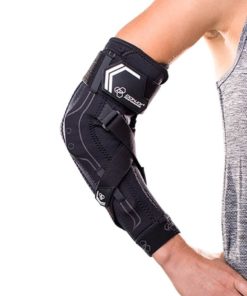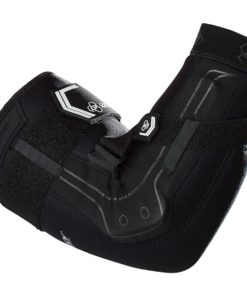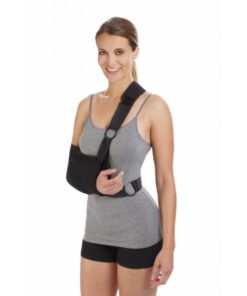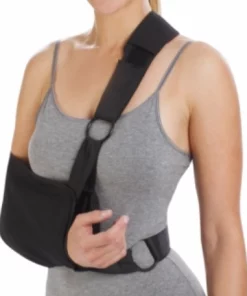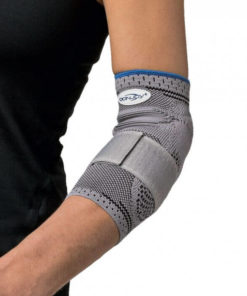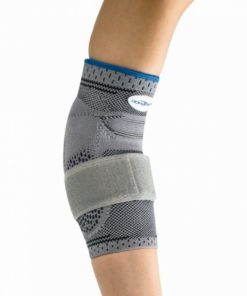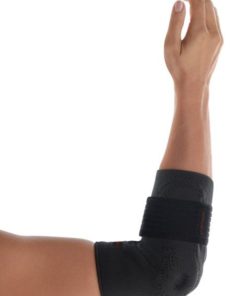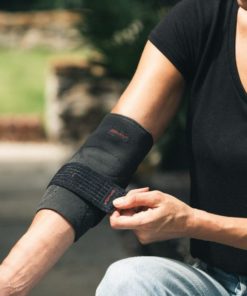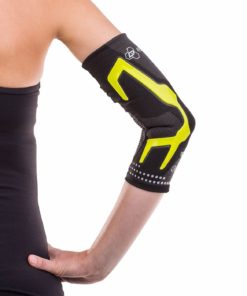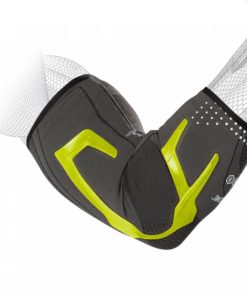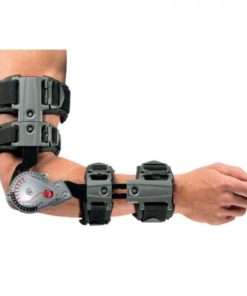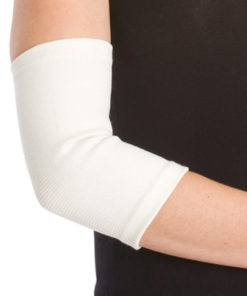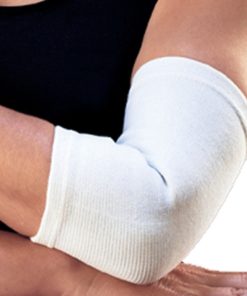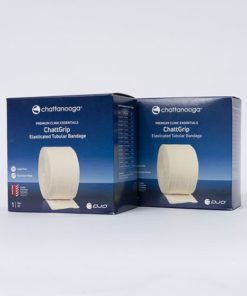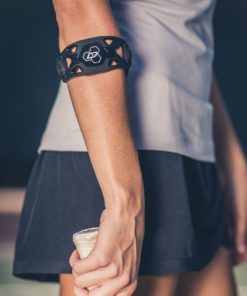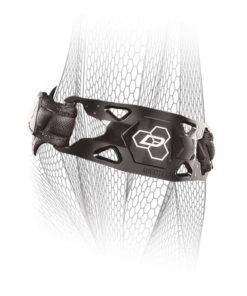Elbow Braces
Elbow pain is a common issue that can greatly affect our daily activities, whether it is due to an injury, repetitive strain from work or sports-related activities. In such cases, finding effective solutions to alleviate discomfort and promote healing becomes essential for maintaining our overall quality of life. This is where elbow braces come into play as a valuable tool in addressing and managing elbow conditions. With their specially designed features and advanced technology, these braces provide support, stability, and relief to the affected area while facilitating proper recovery.
Whether you are an athlete looking to prevent further damage during intense workouts or someone seeking relief from everyday tasks exacerbated by elbow pain, this comprehensive guide on elbow braces will equip you with the knowledge needed to make informed decisions about your body’s well-being.
Braces and Supports for Elbow: A Guide to Choosing the Right One for You
Elbow pain can be a debilitating condition, hindering our ability to perform daily tasks. Whether it is caused by an injury or repetitive strain from work or sports activities, finding the right solution is crucial for alleviating discomfort and promoting healing. This is where elbow braces come in handy as they offer support, stability, and relief to the affected area while aiding in proper recovery. With their specially designed features and advanced technology, these braces play a valuable role in addressing and managing various elbow conditions.
When choosing an elbow brace that suits your needs, it’s important to understand the different types available. There are three main categories: compression sleeves, strap braces with pads or gel inserts, and hinged braces. Compression sleeves provide gentle pressure on the joint to reduce inflammation and improve blood flow. Strap braces offer targeted support by using adjustable straps around the forearm or upper arm area along with cushioned padding or gel inserts at specific pressure points. Hinged braces provide maximum stability by incorporating metal hinges that restrict movement of the joint.
In conclusion, finding relief from elbow pain is essential for maintaining our overall quality of life when faced with injuries or strains. Elbow braces serve as effective tools in this endeavor by providing support, stability, and relief while facilitating proper recovery. Understanding the different types available allows individuals to choose an appropriate brace that meets their specific requirements for comfort and functionality.
Benefits of Using Elbow Braces for Pain Relief and Injury Prevention
Elbow braces offer numerous benefits for individuals seeking pain relief and injury prevention. Firstly, these braces provide essential support and stability to the injured elbow, helping to alleviate discomfort and promote healing. By immobilizing the joint, they prevent further damage from occurring during physical activity or daily tasks, ensuring a faster recovery process.
FAQ’s
What type of elbow brace for tendonitis
If you’re experiencing elbow tendonitis, the first step is to see a doctor or physical therapist for an accurate diagnosis and treatment plan. Depending on the severity of the condition, your doctor may recommend wearing an elbow brace to reduce pain, inflammation, and stiffness. The type of elbow brace you need depends on the underlying cause of your elbow tendonitis. If the condition is caused by overuse, a counter-force brace may be the best option. This type of brace wraps around the forearm and applies pressure over the area to reduce the strain on the tendon. It should be worn during activities to reduce the risk of further injury.For elbow tendonitis caused by arthritis, an unloading brace may be recommended. This type of brace works by reducing the amount of weight and pressure going through the elbow joint, which helps to reduce pain and inflammation. It should be worn on the affected arm whenever you’re active. If you have elbow tendonitis due to a sprain or strain, a compression brace may be the best choice. This type of brace is designed to reduce swelling and provide pain relief. It should be worn for several hours each day to reduce swelling and discomfort. Finally, if your doctor recommends it, you may want to wear a hinged elbow brace to protect the joint during activities. This type of brace provides support while allowing the elbow to bend and flex. It should be worn when performing activities that could cause further injury.Ultimately, the type of elbow brace you need for tendonitis depends on the underlying cause of your condition. Make sure to talk to your doctor or physical therapist about the best type of brace for your needs before purchasing one.
Best Elbow Support
When it comes to finding the best elbow support, it is important to consider both the desired level of support and the type of activity the individual will be engaging in. For light to moderate activity levels, a basic neoprene elbow sleeve can provide the necessary support. These sleeves are usually lightweight and breathable, allowing for easy movement and increased comfort. For more intense activities such as weightlifting or sports, a more rigid elbow support brace may be necessary. These braces are designed to provide increased stability and support to the elbow joint, allowing for better protection against strain and injury. Depending on the individual’s specific needs, the brace should be adjustable and include straps to ensure a secure fit. For those who would prefer a more natural approach, kinesiology tape can be used to provide targeted support while still allowing for a full range of motion. Ultimately, choosing the best elbow support depends on the individual’s needs, activity level, and personal preference.
Do braces help with elbow pain
Elbow Braces can help with elbow pain. Braces are designed to reduce strain on the elbow joint and muscles by providing support and stability. They can be a great tool for managing elbow pain caused by conditions such as epicondylitis, arthritis, or overuse syndrome. In some cases, wearing a brace may also help reduce inflammation.When choosing a brace for elbow pain, be sure to select one that fits properly and provides the recommended support for your specific condition. Your doctor can help you choose the right brace for your needs, as well as provide advice on how to safely use it. Additionally, it is important to remember that braces should be used in conjunction with other treatment methods, such as physical therapy and medication, in order to best manage your pain.
Additionally, elbow braces are effective in preventing injuries by reducing the risk of strain or trauma on the joint. They help distribute forces evenly across the arm, minimizing excessive pressure on specific areas and decreasing the likelihood of overuse injuries or sprains. Whether engaging in sports-related activities or repetitive tasks at work, wearing an elbow brace can significantly reduce the chances of experiencing any debilitating conditions.
Moreover, these specially designed braces incorporate advanced technology to maximize their effectiveness. Many models feature adjustable straps or compression sleeves that allow users to customize the level of support needed for their particular condition. Some even incorporate heat therapy or massage features that facilitate improved blood circulation and enhance healing. With their combination of support, stability, and technological advancements, elbow braces prove invaluable in managing various elbow conditions while promoting overall well-being.
How to Properly Use and Care for Your Elbow Brace
Elbow braces are an effective tool for managing and alleviating elbow pain, but it is essential to know how to properly use and care for them. Firstly, when using an elbow brace, it is important to ensure a proper fit. The brace should be snug enough to provide support and stability without restricting movement or causing discomfort. It should also be positioned correctly so that the pressure is evenly distributed around the affected area.
Secondly, proper usage means wearing the brace as directed by your healthcare provider or following the manufacturer’s instructions. This may involve wearing it during activities that aggravate your elbow pain or as part of a rehabilitation program. Remember not to overuse the brace, as this can lead to dependence on it rather than promoting healing. Ensuring a proper fit, following recommended usage guidelines from healthcare professional or manufacturers, and maintaining cleanliness will promote effectiveness in addressing these issues while prolonging its durability in supporting overall recovery efforts.
Basketball
Aircast Parts
Ankle Braces
DonJoy Performance

